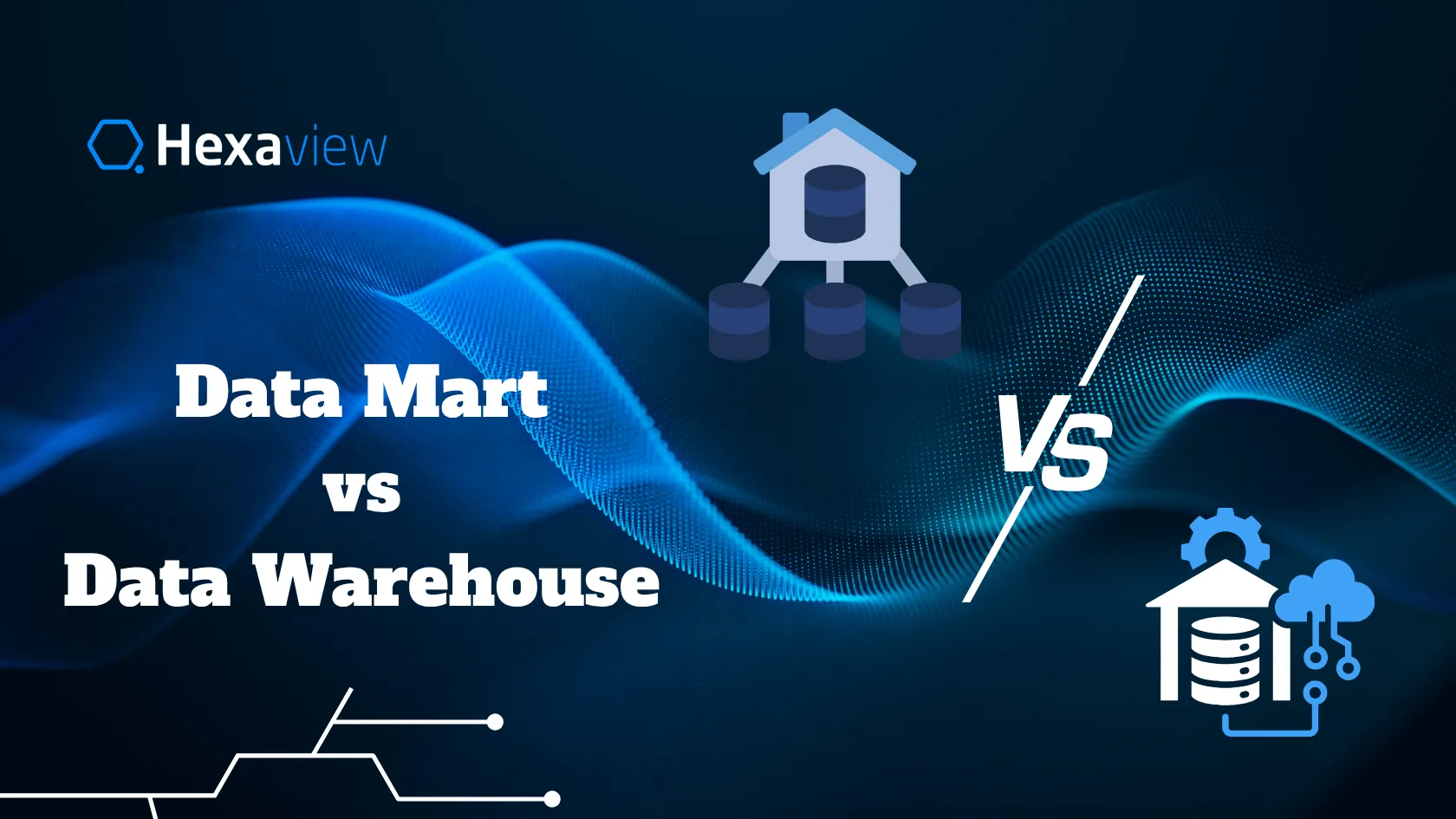In today’s digital economy, data is more than just numbers in a spreadsheet. It’s a vital asset that drives decision-making, enhances customer experience, and shapes business strategies. But with all this data floating around, how do organizations organize, access, and make sense of it all?
That’s where data warehouses Vs data marts come into play. These two components form the backbone of data management in modern enterprises. While they may sound similar, they serve different purposes and cater to different business needs.
In this guide, we’ll take a deep dive into what data warehouses and data marts are, how they differ, how they work together, and when you should use one over the other.
data warehouses Vs data marts
Understanding the Basics
Before jumping into comparisons, let’s understand what each term really means.
What Is a Data Warehouse?
A data warehouse is a large, centralized repository that stores data from multiple sources across an entire organization. It’s built to support decision-making at a strategic level, offering a unified view of enterprise-wide data.
Think of it as the central nervous system for your company’s data: every department sends its data here, where it’s cleaned, standardized, and stored. From here, analysts and executives can run complex queries, generate reports, and visualize long-term trends.
Key Features:
- Centralized storage of all enterprise data.
- Structured data model, optimized for fast querying.
- Supports complex analytics, reporting, and data mining.
- Time-variant, allowing for historical trend analysis.
- Typically built using ETL (Extract, Transform, Load) pipelines.
Example:
A global telecom company wants to analyze customer churn across all regions. The data warehouse collects customer interaction data, billing information, complaint logs, and network performance metrics—allowing analysts to spot where and why customers are leaving.
What Is a Data Mart?
A data mart is a smaller, more focused version of a data warehouse. It’s designed to serve the needs of a particular business unit or department, such as finance, marketing, or operations.
Instead of pulling in everything from every corner of the company, a data mart collects only the relevant information needed for a specific function. This targeted approach allows for faster querying and simplified access for team members.
Key Features:
- Department-specific data (e.g., only sales or marketing).
- Smaller in size and scope than a data warehouse.
- Faster query performance due to limited data volume.
- Can be independent or dependent on a data warehouse.
Example:
A retail brand’s marketing team wants to evaluate a recent ad campaign. The data mart they use includes campaign reach, customer demographics, engagement metrics, and regional sales—all pulled from the broader warehouse but focused on marketing.
Types of Data Marts
Understanding how data marts can be implemented helps determine the best fit for your business model. There are three main types:
1. Dependent Data Mart
This type of data mart pulls information directly from a centralized data warehouse. It benefits from the consistent formatting and integration the warehouse provides. It’s ideal for large organizations that already have an enterprise-wide data warehouse.
2. Independent Data Mart
Independent data marts collect data directly from operational systems like CRM platforms or POS systems. They don’t rely on a warehouse, which can be helpful for quick deployments or small businesses with limited infrastructure.
3. Hybrid Data Mart
As the name suggests, a hybrid data mart combines elements of both dependent and independent data marts. It can draw some data from a warehouse while also pulling real-time information from live systems. This offers flexibility but requires more careful design.
Data Mart vs Data Warehouse: A Detailed Comparison
Let’s break it down further and compare them side-by-side: data warehouses Vs data marts
FeatureData WarehouseData MartScopeCompany-wideDepartmentalPurposeStrategic decisionsTactical analysisData VolumeHighModerate to lowComplexityHighLow to mediumImplementation TimeMonths to a yearWeeks to a few monthsUsersExecutives, analysts, data scientistsDepartment heads, team leadsQuery SpeedCan be slowerFaster due to smaller datasetsMaintenance CostHighLowerArchitectureCentralizedDecentralized or semi-centralizedUpdatesRegular (often nightly ETL)On-demand or periodic
When Should You Use a Data Warehouse?
A data warehouse is the best choice when:
- You want a complete view of your business performance.
- You need to integrate data from multiple departments or systems.
- Your analysts require access to historical data for trend analysis.
- You’re running enterprise-scale reporting and dashboards.
Ideal for: Enterprises with complex operations, multiple locations, or diverse product lines.
When Should You Use a Data Mart?
A data mart is better suited when:
- A specific team needs quick, easy access to targeted data.
- You want to reduce the load on the main warehouse for common queries.
- Your department has unique KPIs not tracked across the organization.
- You need faster implementation for a temporary or pilot initiative.
Ideal for: Marketing, sales, HR, finance, operations teams that need their own slice of data.
How Data Marts and Data Warehouses Work Together
While some organizations use data marts independently, the most efficient approach is a layered model where:
- The data warehouse stores and processes all enterprise-wide data. data warehouses Vs data marts
- Data marts are then built on top of the warehouse for individual departments.
This hybrid architecture provides the best of both worlds: centralized governance and decentralized flexibility.
Real-World Use Cases
Let’s take a look at how companies use these systems in real scenarios:
Retail Company
- Warehouse: Stores customer purchase history, inventory levels, supplier contracts, and logistics data.
- Data Mart: Marketing team uses a mart to track email campaign ROI, customer segments, and seasonal buying trends.
Healthcare System
- Warehouse: Integrates patient records, insurance claims, lab results, and appointment logs.
- Data Mart: The billing team uses a mart for insurance verification, claim status monitoring, and payment trends.
Financial Institution
- Warehouse: Central repository for transaction logs, credit risk scores, customer profiles, and compliance data.
- Data Mart: Fraud detection team uses a mart to analyze suspicious patterns and trigger alerts in real time.
Cloud-Based Evolution of Warehouses and Marts
Today’s data environments have evolved dramatically thanks to cloud technologies. Traditional on-premise storage has given way to cloud-native platforms that are scalable, cost-effective, and easier to maintain.
Popular Cloud Data Warehouse Platforms:
- Snowflake
- Amazon Redshift
- Google BigQuery
- Microsoft Azure Synapse Analytics
These tools allow companies to scale storage and computing power independently, which was nearly impossible with legacy systems.
Data Marts in the Cloud
Modern BI tools like Looker, Tableau, Power BI, and Mode Analytics allow users to build virtual data marts—filtered views of warehouse data without needing to move or duplicate it.
These virtual marts give teams real-time access to exactly what they need—no more, no less.
Benefits of Data Warehouses
- Single source of truth: Eliminates data silos.
- Improved data quality and governance: Standardized processes.
- Historical analysis: Allows tracking changes and growth over time.
- Supports enterprise-scale reporting and analytics.
Benefits of Data Marts
- Faster performance: Smaller datasets are quicker to query.
- Focused insights: Only relevant data is included.
- Lower setup and maintenance cost.
- Empowers teams: Teams can build and manage their own reports without relying on IT.
Challenges to Consider
With Data Warehouses:
- High initial cost and long setup time.
- Complex to maintain and scale without cloud support.
- Requires significant data modeling and integration expertise.
With Data Marts:
- Risk of data silos if not connected to the main warehouse.
- Potential redundancy if the same data exists in multiple marts.
- Security and consistency issues if governance is weak.
Future Trends: Data Mesh, Fabric, and Virtualization
As companies become more data-mature, traditional architectures are evolving.
- Data Mesh decentralizes data ownership to domain teams while maintaining common standards.
- Data Fabric creates a unified data layer across multiple platforms and sources.
- Data Virtualization enables access to data from multiple sources without physically moving it.
These trends are making both warehouses and data marts more flexible, dynamic, and efficient.
Conclusion: Choosing the Right Path
Choosing between a data mart and a data warehouse isn’t about picking one over the other. It’s about understanding your organization’s needs.
- If your goal is long-term strategic planning with complete visibility across departments, a data warehouse is the answer.
- If your focus is on quick, focused access for a specific team or use case, a data mart is likely the better starting point.
Most successful organizations combine both, using a centralized warehouse for enterprise-wide data and department-level marts for speed and specialization. data warehouses Vs data mart
Need help building a data mart or warehouse strategy tailored to your business? Whether you’re just starting or scaling up, aligning your architecture with your goals is the key to unlocking true value from your data.



%201.svg)
